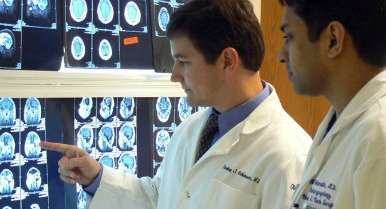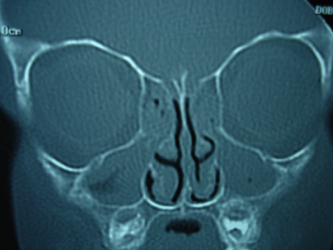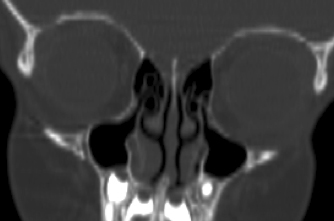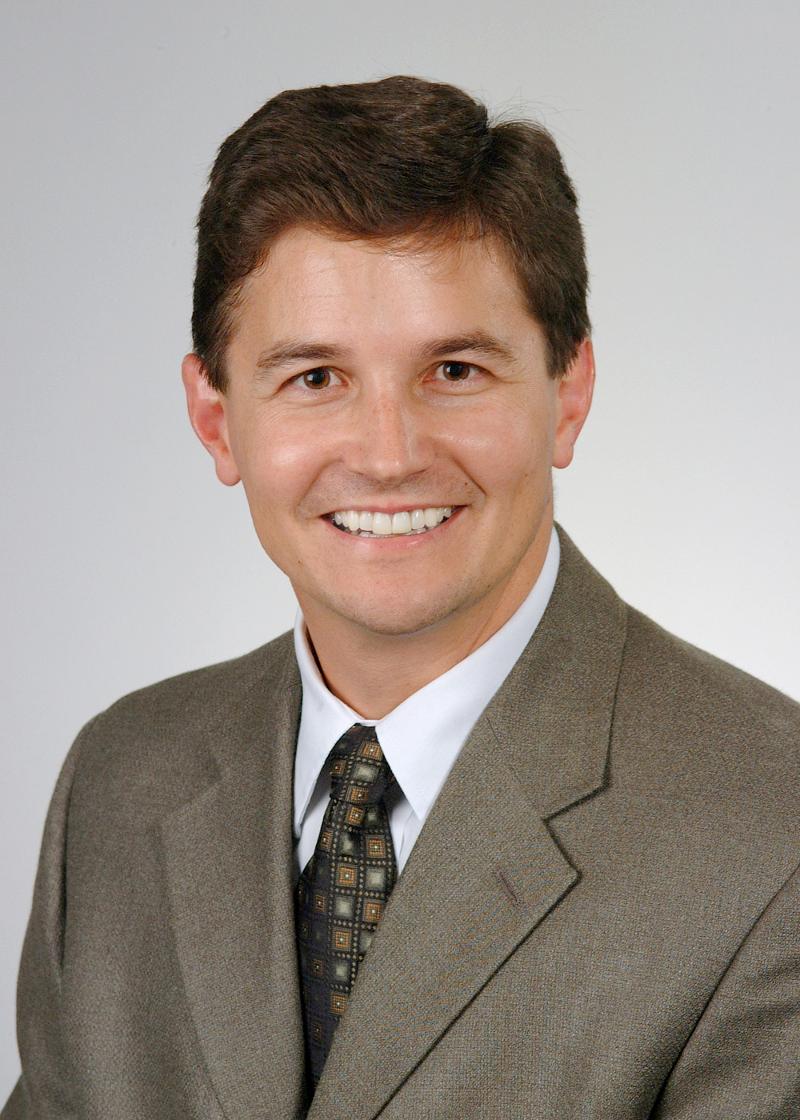July: Treatment of Single-Sided Deafness: BAHA vs. Sophono vs. CROS August: Contemporary Management of Infants with Pierre Robin Sequence
September: Head and Neck Oncology
|
July 2013
The Charleston Course: Otolaryngolgy Literature Update
October 2013
Charleston Swallowing Conference
Head & Neck Oncology Sea to Summit
February 2014
Charleston Sleep Surgery Symposium
March 2014
Sinus Masters
April 2014
Temporal Bone Dissection Course
May 2014
Southern States Rhinology Course
musc.edu/ent/cme/
|
We want to hear from you!
We welcome your feedback - answers, questions, input - on our newsletter articles as well as any ENT questions you may have. If there are topics you are interested in learning more about, please email us at
|
|
|
Dear Colleague,
In this month's ENT E-Update Rodney J. Schlosser, MD discusses diagnosing pediatric chronic rhinosinusitis and recommended treatments.
Dr. Schlosser is an MUSC Professor of Otolaryngology - Head & Neck Surgery, and directs the MUSC Sinus Center.
You can find more information about Dr. Schlosser below and
Please feel free to contact us with your feedback or questions about our E-Udate articles, your patients, or any other ENT issue at [email protected].
Paul R. Lambert, MD
Professor and Chair
|
|
 | |
Rodney J. Schlosser, M.D., Director, Sinus Center,
Medical University of South Carolina
|
Evidence Based
Treatment of Pediatric
|
Pediatric chronic rhinosinusitis (PCRS) is a heterogeneous entity that can often be frustrating to patients and physicians alike. When evaluating children with sinonasal symptoms, one must clearly differentiate between acute and chronic rhinosinusitis. Acute rhinosinusitis is manifested by symptoms such as acute (< 12 weeks) onset of fever, pain, nasal obstruction, purulent rhinorrhea and anosmia. Orbital and intracranial complications occur most often in the setting of acute bacterial rhinosinusitis and are rare in cases of PCRS. In PCRS, symptoms are persistent for greater than 12 weeks. Comprehensive guidelines and evidence based recommendations have recently been published by an international group. It is efforts like this which will aid clinicians in optimizing therapies (EPOS 2012). The diagnosis of PCRS requires two or more symptoms, one of which should be either nasal blockage/obstruction/congestion or nasal discharge (anterior/posterior nasal drip). Additional symptoms may include facial pain/pressure or cough. The diagnosis also requires the presence of objective inflammation on either endoscopy or CT. In younger children, the adenoid can play a prominent role and it is this age group that is the focus of this article. In older children, the adenoid typically atrophies and is less important. At this stage, they are managed similar to adults with CRS.
When to get a CT? CT is typically reserved for children with PCRS symptoms who do not respond to proper medical therapy. The incidence of CT abnormalities is as high as 45% in asymptomatic children who had an average Lund McKay of 2.8, indicating partial opacification of up to 3 sinuses or one osteomeatal complex and one sinus. Thus any abnormalities must be interpreted in the context of the patient's history. Plain x-rays do not correlate. More rapid use of imaging may be prompted in cases of unilateral symptoms, bleeding, crusting or concern for impending complications or other diagnoses based upon the history and examination.
Other diagnostic workup: Testing for allergies, immunodeficiencies, cystic fibrosis or ciliary analysis should be performed in children based upon a suggestive history, such as seasonal symptoms, asthma, poor response to medical therapy, history of recurrent ear/lung infections, family history or culture of unusual organisms.
|
Evidence for medical therapies for PCRS
| |
Therapy
|
Recommendation
| |
Saline irrigation
|
A
| |
GERD therapy
|
C
| |
Topical nasal steroid spray
|
D (reasonable consideration given evidence in adults)
| |
Long term oral antibiotics
|
D
| |
Short term oral antibiotics
|
A- (evidence against)
| |
IV antibiotics
|
C- (evidence against)
|
Medical treatment: Patients have often been treated with short term courses of oral antibiotics by their primary care physician, however current evidence does not support this practice. In fact, one study of 141 children compared 1) saline drops, 2) oral amoxicillin x 10 days with topical vasoconstrictor, 3) maxillary drainage under anesthesia with irrigation via indwelling catheter for 5 days, or 4) maxillary drainage/ catheter, oral amoxiciliin and topical vasoconstrictor. This study found no difference among any of the treatment arms with 26 week follow up. Evidence supports the efficacy of saline irrigation. Studies on the use of saline irrigation in pediatric patients found that only 23% of parents thought their children would tolerate it; however when attempted, 86% of children tolerated it and 84% of all patients thought saline irrigation improved their overall health. These findings were relatively consistent even in children below the age of 5 years (Jeffe et al Int J Pediatric ORL 2012). Oral steroids have not been studied versus placebo, however oral steroids did demonstrate benefit in PCRS when combined with oral antibiotics when compared to a group receiving antibiotics alone. Topical nasal steroid spray has not been studied in PCRS, hence it receives a grade D recommendation. However given strong evidence in all forms of adult CRS and efficacy in pediatric allergic rhinitis with limited harm, most clinicians would consider this first line therapy. Long term oral antibiotics and IV antibiotics have not been found to be effective in adult CRS and it does not appear as if there is support for these modalities in PCRS. GERD therapy is a level C recommendation based upon retrospective series and should probably be left to the discretion of the treating physician for each individual child. Anecdotal evidence for a variety of other therapies to include reflux treatment, leukotriene antagonists or mucolytics is anecdotal and not supported by high level evidence (Figure 1).
 |
Figure 1a: Initial CT in 4 year old with pansinusitis after failing treatment with broad-spectrum antibiotics, INCS and saline.
|
 |
Figure 1b: Treatment with reflux medications resulted in anecdotal improvement, although this practice is not supported by strong evidence.
|
Surgical treatment: It is virtually impossible to differentiate adenoiditis from PCRS in younger children. Adenoid specimens from children with PCRS had 88-99% of their surface area covered with biofilms, compared to 6% of adenoids removed for obstructive reasons. Similarly, there are high concordance rates between bacteria cultured from the adenoid and middle meatus of PCRS children. In addition to this microbiologic role, there have been studies suggesting an immunologic role for the adenoid in PCRS. Meta-analysis reports success rates with adenoidectomy alone at 69%. Consideration can also be given to antral lavage either at the same time or in cases of failure. This increases success rate to around 88%. Balloon sinuplasty has demonstrated some success in children, however it is difficult to determine if this is due to ostial dilation or antral lavage or both. FESS can be considered in adenoid failures or in older children with small adenoids and has a success rate around 88%. Additionally, children with CF, AFRS or immunodeficiencies are likely to require topical medications postoperatively, thus FESS with widely marsupialized cavities, rather than adenoidectomy or simple ostial dilation, will facilitate this. Meta-analysis reports success rates around 88%.
Conclusions: Pediatric CRS typically resolves as children get older. Initial treatment should consist of saline irrigation and INCS with consideration of oral steroids in select cases. Evidence generally does not support use of oral antibiotics and evidence is lacking or weak for other adjuvant therapies. When medical therapy fails, surgery should be considered. In children younger than 6 years, this is typically an adenoidectomy with consideration for maxillary lavage and maxillary os dilation. In children older than 6 years or with other underlying conditions, FESS has a high success rate
Rodney J. Schlosser M.D.
Director, Sinus Center
Medical University of South Carolina
|
About Dr. Schlosser...

Rodney J. Schlosser, M.D.
Professor
Director, Sinus Center
M.D.: Mayo Clinic
Residency: University of Virginia
Fellowship: University of PA
Special interests: Adult and pediatric sinus and allergy disorders, CSF leaks,
sinus tumors
|
|
|
|
|